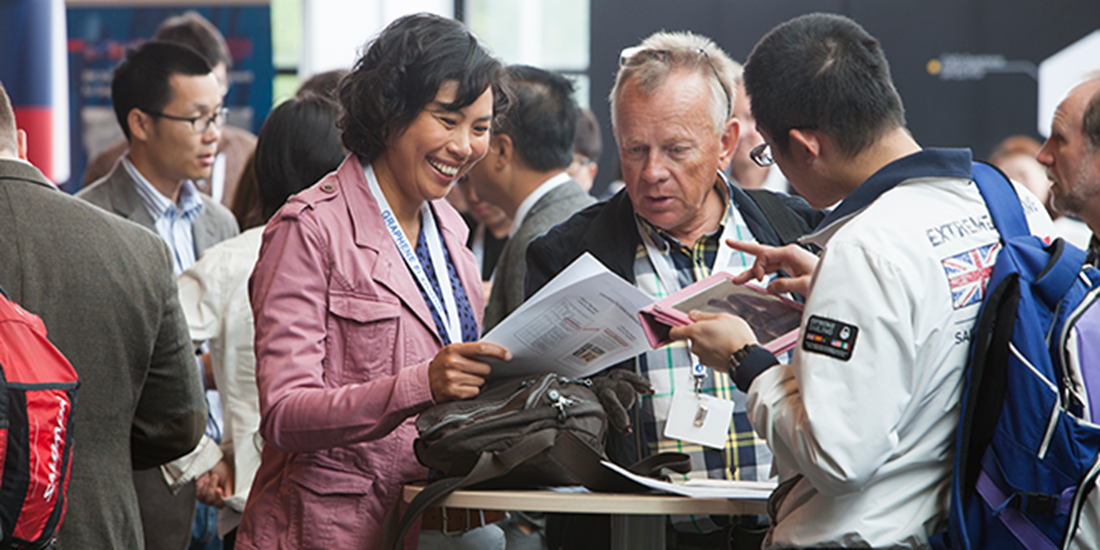Graphene Week Continues, Tips on How to Get Published
Add a video abstract to your academic article and on average it will attract three times the number of downloads. Do not use unnecessarily complicated language. Also, if you write about something that is disruptive and can attract a huge crowd, it is far more likely that the article will be published.
These were just three of the tips and insights provided by editors from Physical Review Letters, 2D Materials and three different Nature journals during a Graphene Week fringe session on research publishing.
First up on the third day of Graphene Week in Gothenburg was Tony Heinz from Columbia University in the USA. He gave a talk on terahertz spectroscopy of graphene and described the response of electrons in graphene to electromagnetic radiation over a wide spectrum range.
Optoelectronics in focus
In fact, the entire morning was dedicated to presentations related to optoelectronics. The final presentation before lunch was by Ado Jório from Universidade Federal de Minas Gerais (UFMG) in Brazil. He was invited to provide the audience with a deeper understanding of advances in Raman spectroscopy of graphene-related systems.
Tony Heinz about his presentation
Ado Jório from UFMG in Brazil
Parallel sessions and sponsor exhibition
The afternoon took the form of parallel sessions in two halls with a large number of enlightening presentations. During the coffee breaks, participants had the opportunity to visit the sponsor exhibition.

Martin Kemp from Haydale
Graphene Square Inc. introduction
Low2High Vacuum – an introduction
Editorial insight – hot trends and tips
Later in the afternoon, what is commonly known as a fringe session was arranged. The theme for the day was ‘Where to publish research on graphene and other 2D materials’. With Luigi Colombo from Cambridge Graphene Centre as moderator, five highly skilled editors from different journals shared their views. The newest journal – 2D Materials – was recently launched and a special graphene-oriented issue is currently being produced. Tim Smith from IOP Publishing spoke about the planned future for the journal, which has Vladimir Falko as Editor-in-Chief, Tony Heinz as regional editor for North America and Byung Hee Hong as regional editor for Asia.
Andrea Taroni from Nature Materials, Elisa De Ranieri from Nature Nanotechnology, Luke Fleet from Nature Physics and Sami Mitra from Physical Review Letters also listed a number of hot trends and offered suggestions on what researchers ought to bear in mind when submitting.
Luigi Colombo from about the fringe publishing session
Tim Smith from the ’2D Materials’ journal
Introduction to 2d Materials
Samindranath Mitra from Physical Review Letters
Representatives from Nature talking about graphene
Tim Smith from IOP Publishing about the 2D Materials journal
Highly popular poster session
The third day of the conference ended with a highly popular poster session, just like the previous days. The final poster session will be on Thursday. The sessions have more than 100 presentations each day.
Chariya Virojanadara from Linköping University
Philip Willke at the poster session

The Graphene Week Conference is taking place at Chalmers University of Technology on 23 – 27 June. For the latest updates, follow us on http://twitter.com/GrapheneCA
Photo: Chalmers / Henrik Sandsjö (2) and Anders Frick (1, 3, and photo gallery)
Here are some videos and pictures from the third day of Graphene Week 2014:
Tony Heinz about his presentation
Ado Jório from UFMG in Brazil
Luigi Colombo from about the fringe publishing session
Tim Smith from IOP Publishing about the 2D Materials journal
Tim Smith from the ’2D Materials’ journal
Martin Kemp from Haydale
Chariya Virojanadara from Linköping University
Philip Willke at the poster session




